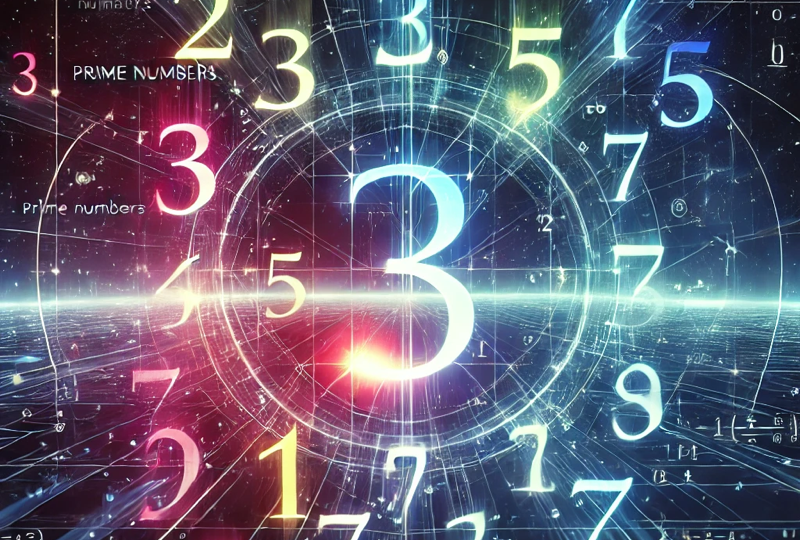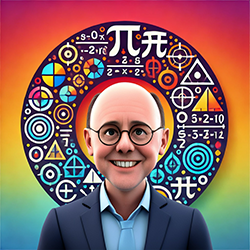
5 Fascinating Facts About Prime Numbers That Will Blow Your Mind
Let’s talk about prime numbers today. But wait — what exactly makes a number “prime”? A prime number is a natural number greater than 1 that cannot be formed by multiplying two smaller natural numbers. In other words, its only factors are 1 and itself. Simple enough, right?
But these seemingly simple numbers hold incredible mysteries that have puzzled mathematicians for centuries. So let’s explore some of the most fascinating aspects of prime numbers together. I think we can say that these properties might just change how you see numbers forever.
1. There Are Infinitely Many Prime Numbers
Have you ever wondered if prime numbers eventually stop? It’s a reasonable question — after all, they do seem to get rarer as numbers get larger. But here’s the amazing truth: prime numbers go on forever.
This fact was proven by the ancient Greek mathematician Euclid around 300 BCE, making it one of the oldest mathematical proofs still taught today. And how did he prove it? Through a brilliant contradiction argument.
Suppose, for a moment, that there are only finitely many primes, say \(p_1, p_2, \ldots, p_n\). What happens if we multiply all of these primes together and add 1?
\[ N = p_1 \times p_2 \times \ldots \times p_n + 1 \]
This new number \(N\) is not divisible by any of our known primes (it always leaves remainder 1). So either \(N\) itself is prime or it has some prime factor we haven’t included in our list. Either way, we’ve found a new prime! This contradicts our assumption, proving that there must be infinitely many primes.
Isn’t that mind-blowing? No matter how far you count, you’ll never reach a “last” prime number.
2. The Mystery of Twin Primes
Have you noticed pairs like 3 and 5, 11 and 13, or 17 and 19? These are called “twin primes” — pairs of prime numbers that differ by exactly 2.
But here’s the fascinating question that remains unsolved: Are there infinitely many twin primes? Despite centuries of study, mathematicians still don’t know for sure!
The Twin Prime Conjecture states that there are infinitely many twin primes, but nobody has been able to prove it. In 2013, mathematician Yitang Zhang made a breakthrough by proving that there are infinitely many pairs of primes that differ by at most 70 million. That’s not quite 2, but it was the first finite bound ever established!
Since then, mathematicians have reduced that bound dramatically, but getting all the way down to 2 remains one of mathematics’ greatest unsolved problems.
3. The Largest Known Prime Number Is Enormous
How large do you think the largest known prime number is? Thousands? Millions? Billions?
The answer will astound you. As of my knowledge cutoff, the largest known prime number is \(2^{82,589,933} – 1\), which is a number with 24,862,048 digits!
If you tried to write this number down on paper, assuming each digit is 3mm wide, your number would stretch for about 75 kilometers (46 miles)!
These massive primes are called Mersenne primes, having the form \(2^n – 1\). Finding them requires massive computational power, and the search for ever-larger primes continues through distributed computing projects where people volunteer their computers’ processing power to help find the next record-breaking prime.
4. Prime Numbers Are the “Atoms” of Mathematics
Why do mathematicians care so much about prime numbers? Because they’re the fundamental building blocks of all numbers.
The Fundamental Theorem of Arithmetic states that every integer greater than 1 can be expressed as a unique product of prime numbers (ignoring the order). This is remarkably similar to how all matter is built from atoms in chemistry!
For example:
- 12 = 2 × 2 × 3
- 100 = 2 × 2 × 5 × 5
- 2023 = 7 × 17² (that’s 7 multiplied by 17 squared)
This property makes prime numbers incredibly important in many areas of mathematics and computer science, especially cryptography. And speaking of which…
5. Prime Numbers Protect Your Passwords and Online Transactions
Did you know that prime numbers are responsible for keeping your online accounts and banking information secure?
Modern encryption methods like RSA (named after its creators Rivest, Shamir, and Adleman) rely on a fascinating property of prime numbers: it’s easy to multiply two large prime numbers together, but extremely difficult to work backward and figure out which primes were multiplied to get that product.
For example, it’s simple to calculate that 61 × 53 = 3233. But if I just gave you the number 3233 and asked you to find its prime factors, you’d have to do quite a bit of work to discover they are 61 and 53.
Now imagine doing this with prime numbers that have hundreds of digits each! The product would have around twice as many digits, and finding the original primes would take the world’s most powerful computers billions of years using current methods.
This mathematical asymmetry is the backbone of internet security. So next time you log into your favorite social media account or make an online purchase, remember that prime numbers are working behind the scenes to protect your information!
Conclusion: The Endless Wonder of Primes
Prime numbers are far more than just a topic in your math textbook — they’re mysterious, powerful entities that connect to everything from the internet security protecting your personal data to some of the most profound unsolved problems in mathematics.
And the most beautiful part? Despite being studied for thousands of years, prime numbers still hold secrets waiting to be discovered. Maybe you’ll be the one to uncover the next great prime number mystery!
What fascinates you most about prime numbers? Have you ever spotted patterns in the primes yourself? Let me know in the comments below!
RELATED POSTS
View all



